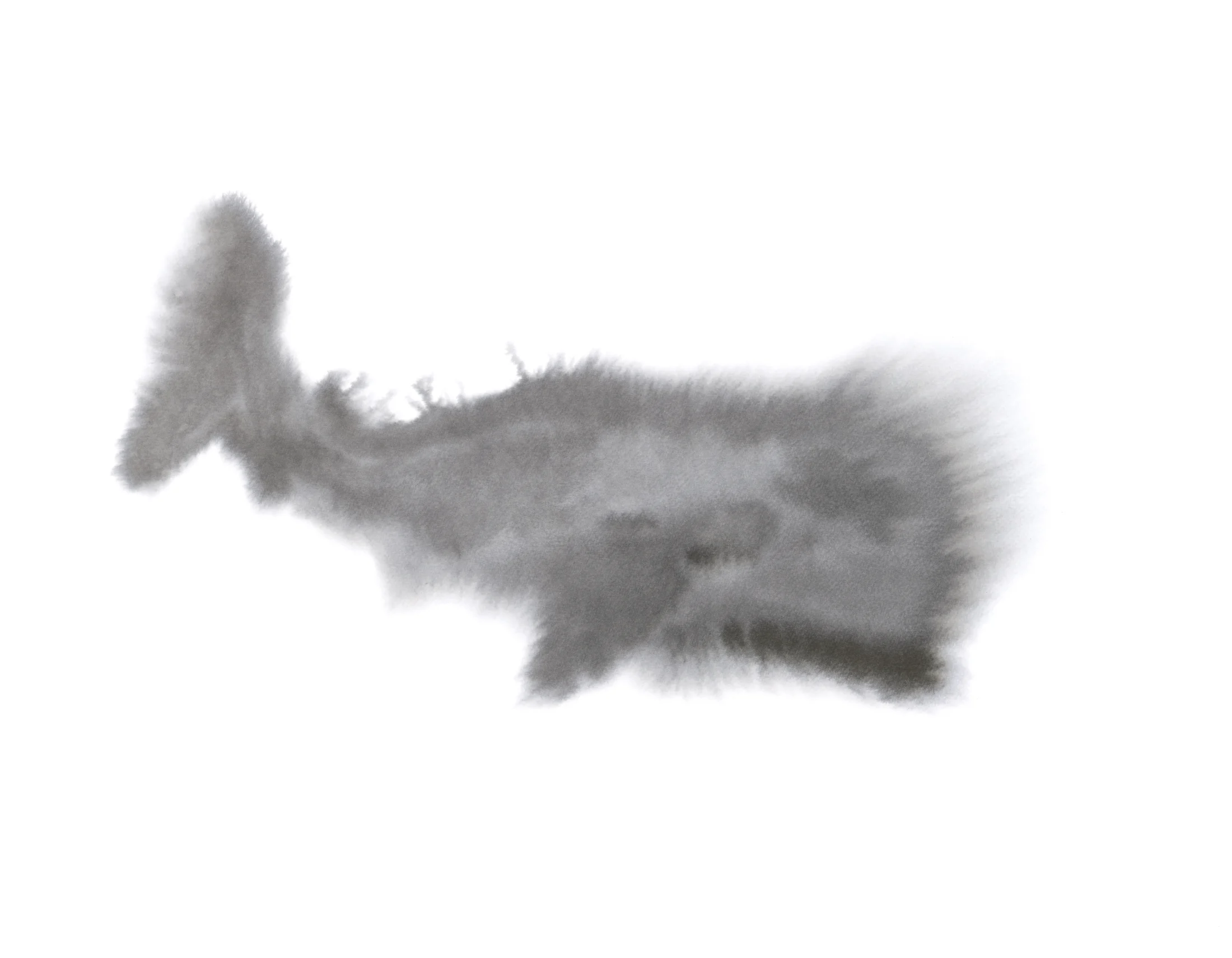

Dutch artist Rop van Mierlo has made animals his muse since graduating from school. From afar, his creatures are blobs of running colors with overlapping features, but up close their characters reveal themselves. They’ve found their home on the streets and bedroom walls of Amsterdam and are dearly loved by the locals. They’ve even been used to drum up votes for a political party fighting for animal rights. Here, Rop tells Kaira van Wijk the story behind his fluffy friends.
The playful and peculiar creatures in Amsterdam-based artist Rop van Mierlo’s work – ranging from paintings to mohair wall hangings, hand-tufted wool rugs and trippy animations – have a life of their own. Back in 2008, as he graduated from Design Academy Eindhoven, the artist was fascinated by the urge of modern man to restrain the natural world. He wanted to create wild animals that couldn’t be controlled. Over a decade later, his work is less about the animals and more about a free-spirited process.
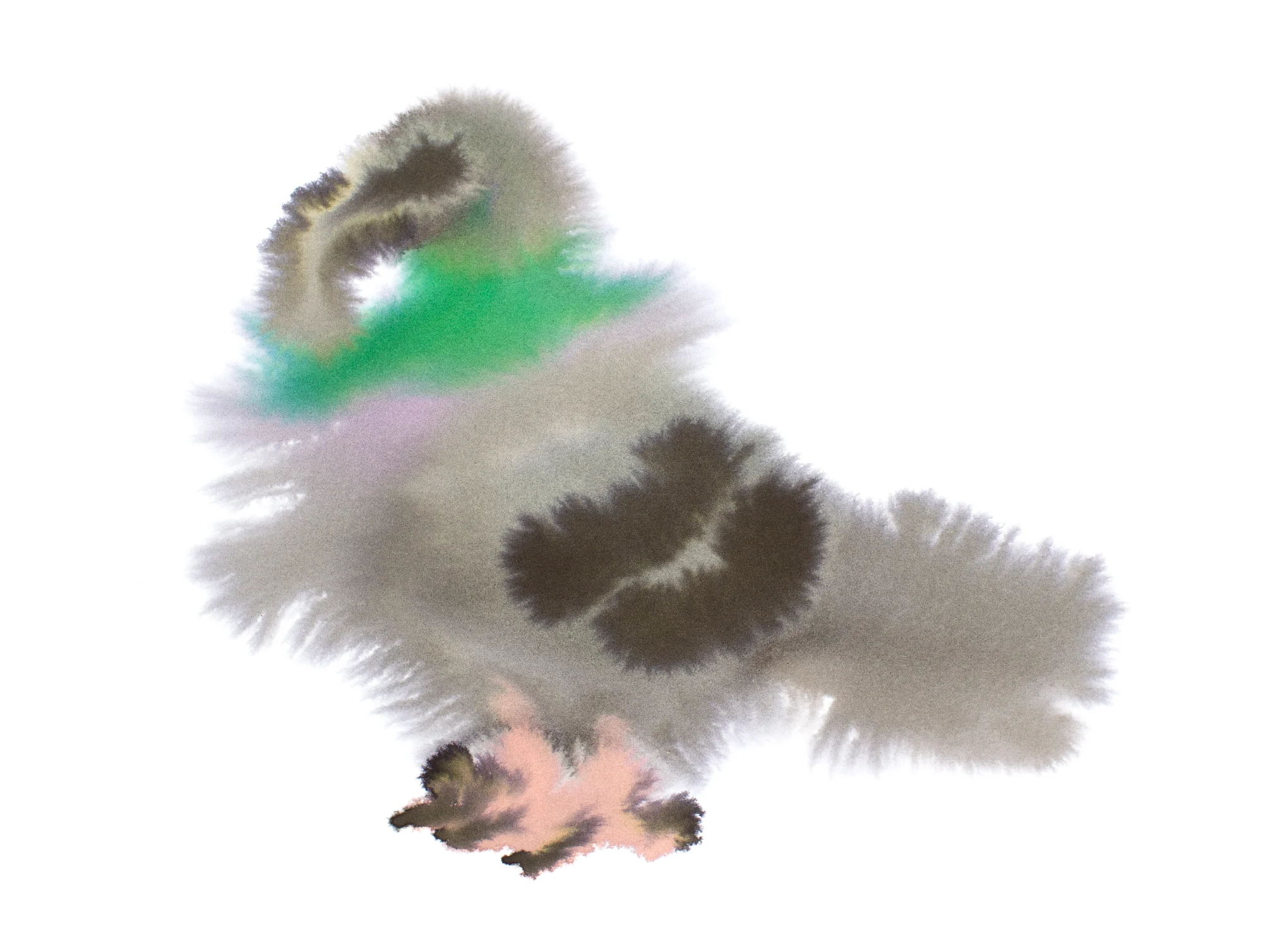
Rop was taught his now signature wet-on-wet technique at a Waldorf School – a type of educational facility that values its pupils' imagination and creativity over their performance in standardized testing – but he struggled to get to grips with it at first. “I loved drawing, but at the age of seven I was introduced to this wet style of painting and I was... horrified,” he laughs. Submerged in water, all the colors ran amok, crossing carefully prepared pencil lines. Even now a new piece sometimes needs a little time before the artist can see its full potential. “The elephant, for example, is now one of my favorites, but at first I didn’t like how it turned out. Then I stumbled upon it a few weeks later and all of a sudden it just clicked,” he says. On first glance the elephant might look like a giant grey blob, but on closer inspection its gaze is focused and it appears to be sprinting, as if refusing to be captured.
“As an illustrator you’re often trying to capture your subject in a neat way, but I always tried to imagine the animals to be out of my control,” he says. Wet-on-wet painting fit this idea perfectly: liquid watercolors running freely over a painting board wetted with a sponge.
I guess the more we grow up the more we’re inclined to think in boxes.

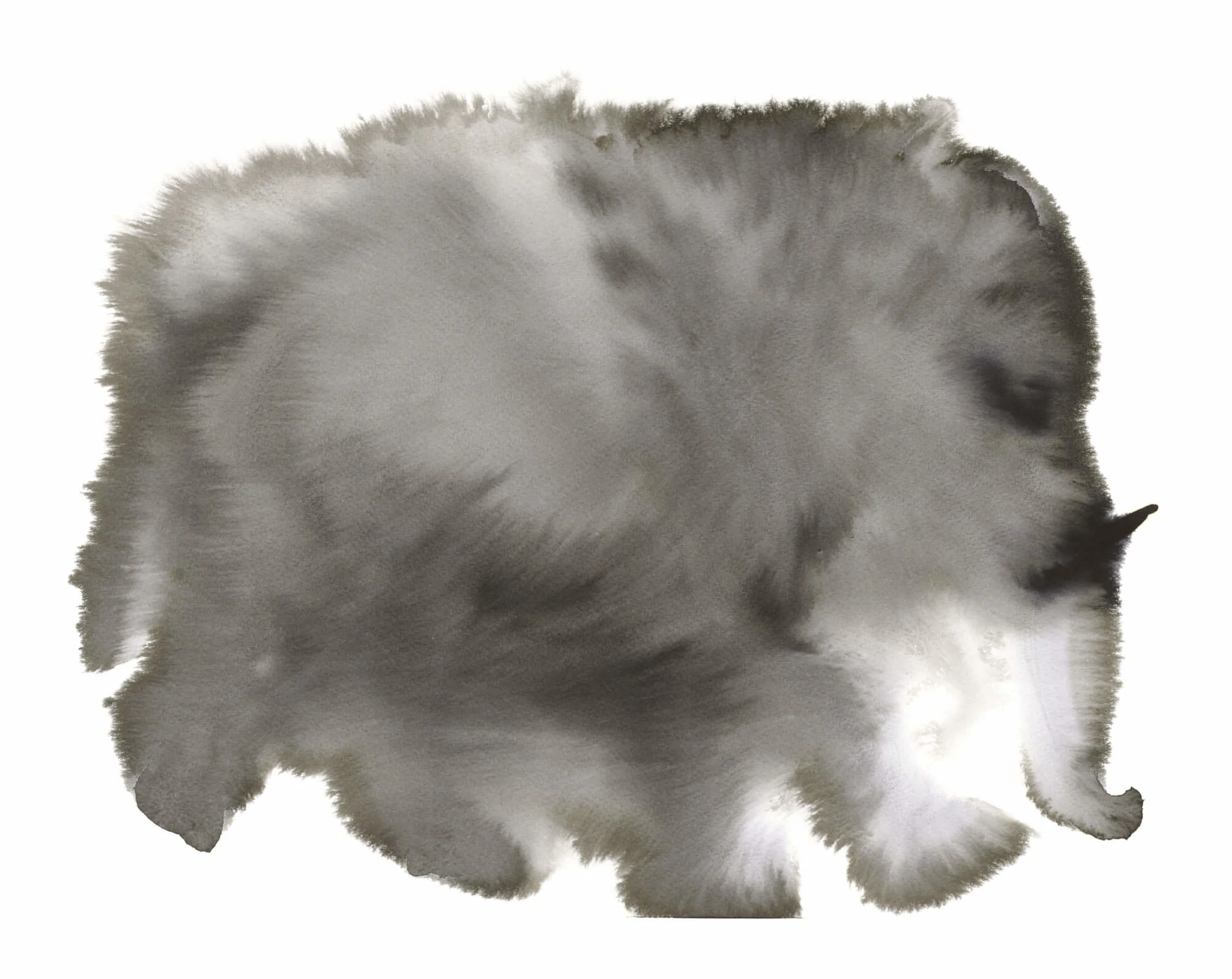
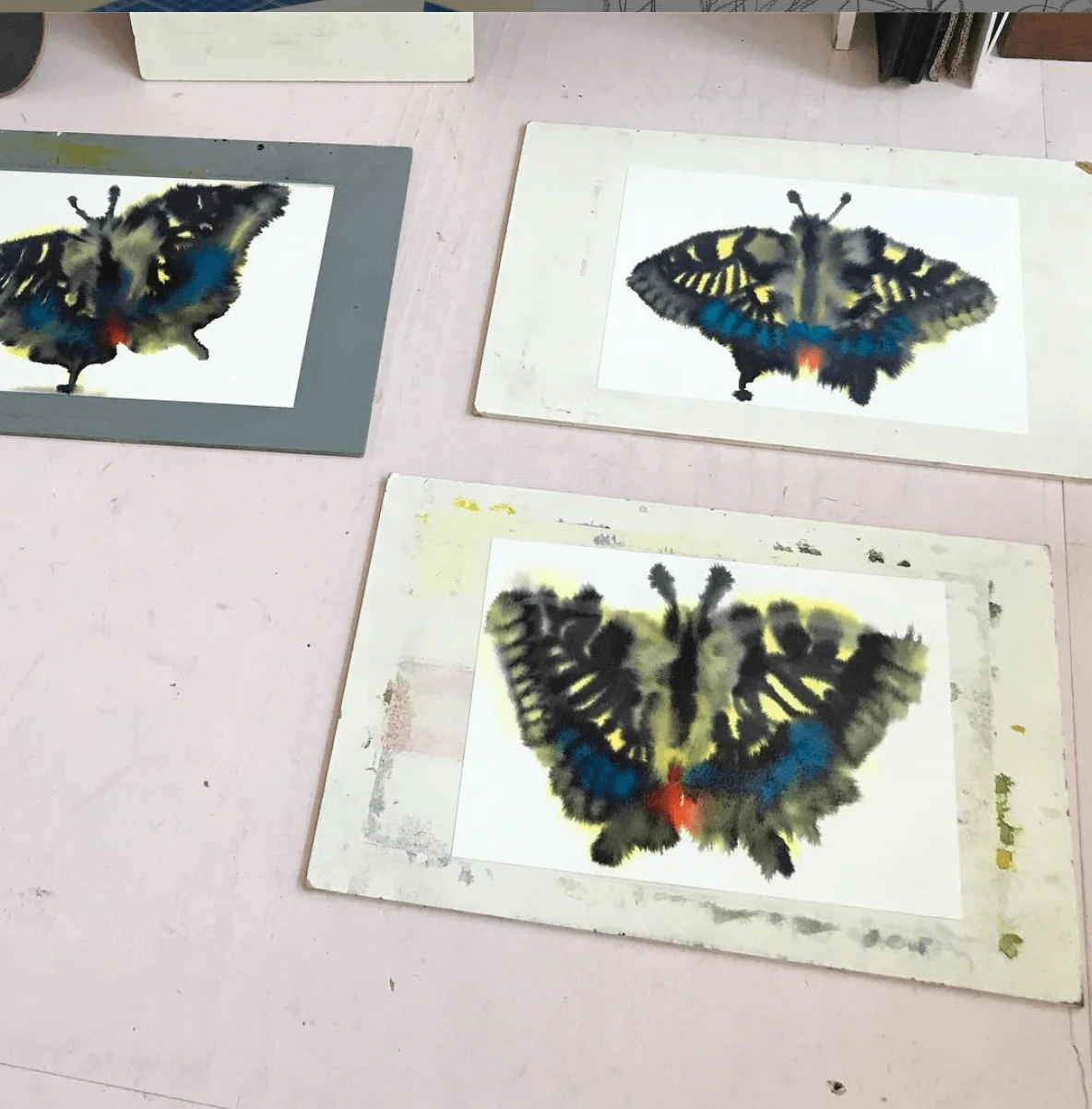
Now on its 10-year anniversary, Rop’s book Wild Animals, made up of a collection of his kind and cuddly creatures, is still a bestseller. “What’s changed over the years is that I accept a little more intervention and experimentation. I have tried different angles to make the animals seem more three-dimensional, but in the end I always prefer them looking quite flat, simple and abstract, and people can still just guess the animal in a fraction of a second,” he says. It’s mostly children who instantly get it right. “Adults have more of a tendency to overthink. I guess the more we grow up, the more we’re inclined to think in boxes.”
While the original paintings appear to be large-scale, he actually makes them in 30x40cm sizes. “I don’t like to have too much control over the finer details,” he explains. There’s a constant play between control, self-critique and letting go in Rop’s work. His very first tiger painting, a fuzzy feline that is also one of his favorites, was made free from constraint in a single take. “Usually, I paint multiple versions of the same animal and pick one,” he says.
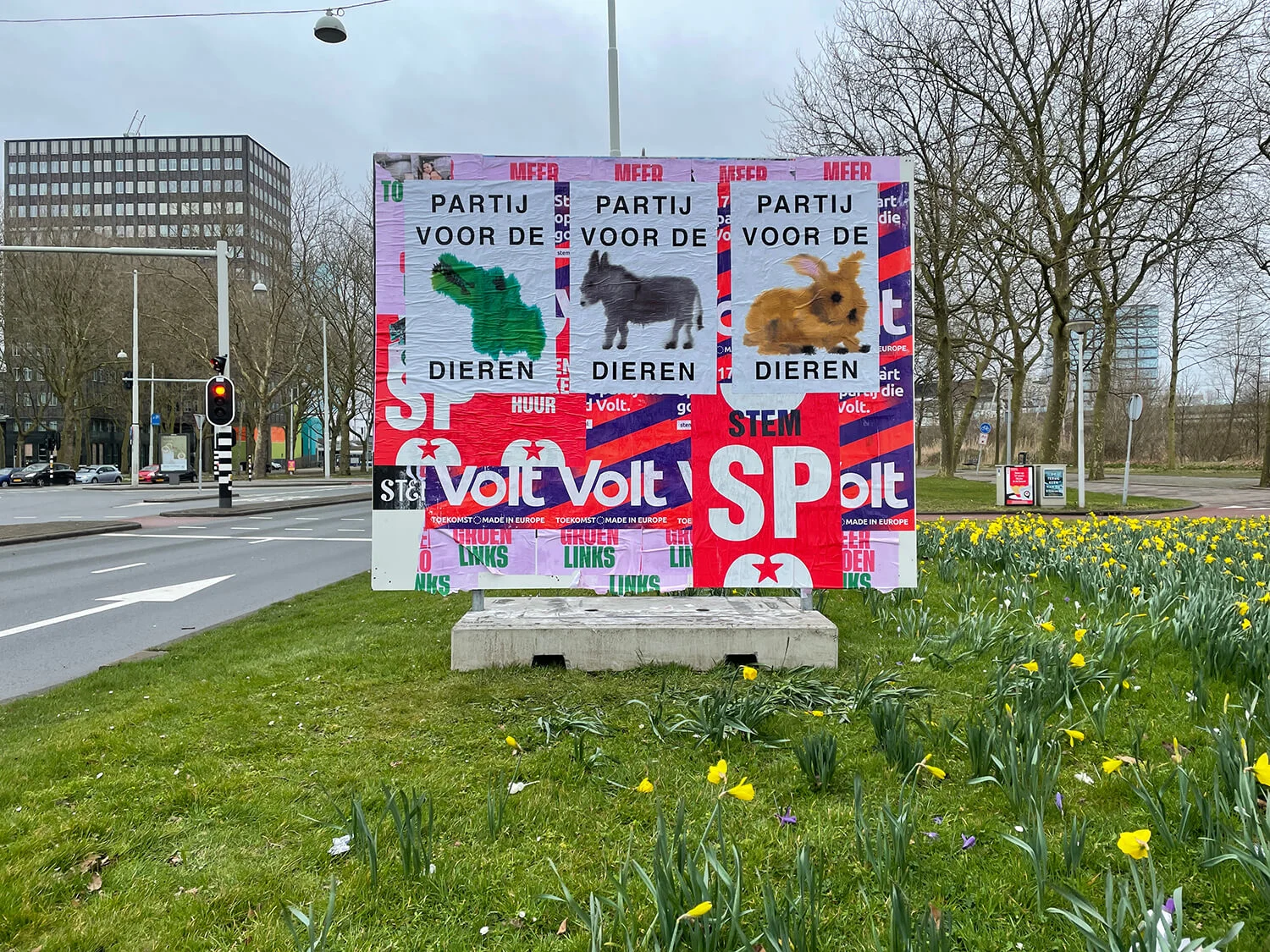

I don’t like to have too much control over the finer details.

Rop’s work garnered a massive public response when he self-initiated a poster campaign for Partij voor de Dieren (PvdD, Party for the Animals,) a left-wing political party that advocates for animal rights, but also for a more social, fair and sustainable future for all. “With the polls showing right-wing parties on top, I felt we had to do something,” he says. He wasn’t exactly a long-time PvdD-loyalist, but he did always lean left when voting. “And putting the climate crisis firmly on the agenda was in dire need,” he says. The artist’s team handed out hundreds of animal posters with his own spin on the PvdD logo. “Some people wanted to hang posters all over the city, others got a print for their child’s bedroom,” he says.
One thing that’s clear about Rop’s work is that he doesn’t take things too seriously. Or too literally for that matter. It might be his dry sense of humor, or a subconscious conviction to let loose and stop trying to make sense of everything out there in the world. Or maybe it’s an invitation to us, to reconnect with our wild instincts within.
